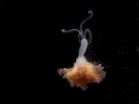(Press-News.org) New multicore optical fibers have many times the signal-carrying capacity of traditional single-core fibers, but their use in telecommunications has been severely restricted because of the challenge in splicing them together-- picture trying to match up and connect two separate boxes of spaghetti so that all of the noodles in each box are perfectly aligned. Now, a new splicing technique offers an automated way to do just that, with minimal losses in signal quality across the spliced sections. The method will be described at the Optical Fiber Communication Conference and Exposition/National Fiber Optic Engineers Conference (OFC/NFOEC) in Anaheim, Calif. March 17-21.
In the telecommunications industry, engineers maximize signal-carrying capacity using a process called multiplexing, which allows multiple signals or data streams to be combined within a single fiber cable. One digital phone line, for example, uses 64 kilobits per second of bandwidth, but with a technique called time multiplexing, more than 1.5 million phone conversations can take place at the same time, carried by one fiber core. With wavelength multiplexing, that one fiber core can send up to 200 different wavelengths of light simultaneously, increasing the capacity to 10 terabits per second, serving about 200 million phone lines. Those multiplexed fibers, in turn, can be bundled together into a so-called multicore fiber (MCF), consisting of up to 19 cores—and up to 19 times the signal-carrying capacity.
The challenge, however, is splicing those multicores together.
Researchers who work with MCFs in the lab usually have their own preferred manual processes for aligning and splicing fibers, explains Wenxin Zheng, manager of splice engineering at AFL in Duncan, S.C., who developed the new technique. "Although the manual way may be good for a skilled operator in a lab environment for research purposes, automation is the only path that can push MCF to factories and production lines."
In Zheng's process, which uses a Fujikura FSM-100P+ fusion splicer (see image), the fibers to be spliced are stripped and loaded into the splicer, then rotated and imaged with two video cameras so that their cores can be roughly aligned using a pattern-matching algorithm. Next, using a power-feedback method and image processing, a pair of corresponding cores in each fiber are finely aligned, as is the cladding around the cores. Finally, the cores are heat-spliced.
"To align the multiple cores simultaneously is a big challenge," Zheng says. "If two fibers to be spliced have random core locations, there is no way to align the entire core." However, the component cores of MCFs can be aligned if they are created using the same design standard, and if the cores are distributed symmetrically in the MCF—such as in a seven-core MCF with one central core surrounded by six cores oriented like the spokes of a wagon wheel. In that case, Zheng notes, "we can fine-align one side-core in an MCF and its cladding at the same time. Based on the geometric specifications of the fiber, the rest of the cores will be automatically aligned."
INFORMATION:
Zheng's presentation, "Automated Alignment and Splicing for Multicore Fibers," will take place at 5 p.m. Monday, March 18 at the Anaheim Convention Center.
About OFC/NFOEC
For more than 35 years, the Optical Fiber Communication Conference and Exposition/National Fiber Optic Engineers Conference (OFC/NFOEC) has been the premier destination for converging breakthrough research and innovation in telecommunications, optical networking, fiber optics and, recently, datacom and computing. Consistently ranked in the top 200 tradeshows in the United States, and named one of the Fastest Growing Trade Shows in 2012 by TSNN, OFC/NFOEC unites service providers, systems companies, enterprise customers, IT businesses, and component manufacturers, with researchers, engineers, and development teams from around the world. OFC/NFOEC includes dynamic business programming, an exposition of more than 550 companies, and cutting-edge peer-reviewed research that, combined, showcase the trends and pulse of the entire optical communications industry.
OFC/NFOEC is managed by the Optical Society (OSA) and co-sponsored by OSA, the Institute of Electrical and Electronics Engineers/Communications Society (IEEE/ComSoc), and the IEEE Photonics Society. OFC/NFOEC 2013 takes place March 17 – 21 at the Anaheim Convention Center in Anaheim, Calif. For more information, visit http://www.ofcnfoec.org.
New automated process simplifies alignment and splicing of multicore optical fibers
Technique reported at OFC/NFOEC 2013 takes splicing out of the lab, into the production line
2013-03-12
ELSE PRESS RELEASES FROM THIS DATE:
Penn study: Financial incentives affect prostate cancer treatment patterns
2013-03-12
Philadelphia - According to a new study by researchers at the Perelman School of Medicine at the University of Pennsylvania, prostate cancer patients of urologists who own expensive radiation equipment are more likely to receive radiation treatment in lieu of surgery than patients treated by urologists without an ownership stake in the equipment. The study, now available online in the Journal of Urology, found that integrated prostate cancer centers (IPCCs), where urology and radiation oncology practices are combined, use expensive radiation-based treatments at higher rates ...
Mystery of 'zombie worm' development unveiled
2013-03-12
How do bone-eating worms reproduce? A new study by Norio Miyamoto and colleagues from the Japan Agency for Marine-Earth Science and Technology sheds light on this question through a detailed observation of the postembryonic development and sexual maturation of Osedax worms, also known as "zombie worms." These worms typically inhabit vertebrate bones on the seafloor. The study is published online in Springer's journal Naturwissenschaften - The Science of Nature.
Osedax is Latin for "bone-devourer," which refers to how the worms bore into the bones of whale carcasses to ...
Neural 'synchrony' may be key to understanding how the human brain perceives
2013-03-12
Despite many remarkable discoveries in the field of neuroscience during the past several decades, researchers have not been able to fully crack the brain's "neural code." The neural code details how the brain's roughly 100 billion neurons turn raw sensory inputs into information we can use to see, hear and feel things in our environment.
In a perspective article published in the journal Nature Neuroscience on Feb. 25, 2013, biomedical engineering professor Garrett Stanley detailed research progress toward "reading and writing the neural code." This encompasses the ability ...
4 dinosaur egg species identified in Lleida
2013-03-12
A study headed by the Miquel Crusafont Catalan Palaeontology Institute has for the first time documented detailed records of dinosaur egg fossils in the Coll de Nargó archaeological site in Lleida, Spain. Up until now, only one type of dinosaur egg had been documented in the region.
The archaeological site in Coll de Nargó containing dinosaur eggs lies some 8 kilometres to the west of the town that bears the same name in the province of Lleida. This region is home to different types of geological formations, including the Areniscas de Arén Formation and the Tremp Formation, ...
Does expressing anger on online rant-sites make you feel better or worse?
2013-03-12
New Rochelle, NY, March 12, 2013—Little is known about the value and emotional consequences of expressing anger on the Internet. Rant-sites provide an outlet for anonymous, angry outbursts. How people feel after reading and writing rants and the effects of this behavior is explored in an article in Cyberpsychology, Behavior, and Social Networking, (http://www.liebertpub.com/cyber) a peer-reviewed journal from Mary Ann Liebert, Inc., publishers (http://www.liebertpub.com). The article is available online on the Cyberpsychology, Behavior, and Social Networking (http://www.liebertpub.com/cyber) ...
Young pigs prefer traditional soybean diet
2013-03-12
Des Moines, IA – Pigs aren't known for being picky, but new research shows they avoid bitter tastes when they can.
In a new study of nursery pig diets, researchers from the University of Alberta offered pigs different amounts of soybean meal, napus canola meal and juncea canola meal. They found that pigs ate more soybean meal when given a choice.
Napus canola meal and juncea canola meal come from rapeseed and mustard greens, respectively. Canola meals are less expensive than soybean meal. If producers can replace soybean meal in swine diets, they could produce pork ...
Updated 'stereo EEG' workflow simplifies planning of epilepsy surgery
2013-03-12
Philadelphia, Pa. (March 12, 2013) – For patients with "drug-resistant" epilepsy requiring surgery, an updated stereoelectroencephalography (SEEG) technique provides a more efficient process for obtaining critical data for surgical planning, according to a study in the March issue of Neurosurgery, official journal of the Congress of Neurological Surgeons. The journal is published by Lippincott Williams & Wilkins, a part of Wolters Kluwer Health.
"SEEG is a safe and accurate procedure for invasive assessment of the epileptogenic zone," according to the new report by Dr. ...
Some bacteria may protect against disease caused by stomach infection
2013-03-12
Half of the world's human population is infected with the stomach bacteria called Helicobacter pylori, yet it causes disease in only about 10 percent of those infected. Other bacteria living in the stomach may be a key factor in whether or not H. pylori causes disease, according to a new study led by scientists at the University of California, Santa Cruz.
"People tend to think of the stomach as a relatively sterile environment, but it's actually populated with microbes," said Karen Ottemann, professor and chair of microbiology and environmental toxicology at UC Santa ...
Nearly a third of antibiotic prescriptions for dialysis patients inappropriate
2013-03-12
Patients who receive hemodialysis are at a significant risk of developing infections, a leading cause of hospitalization and death in this patient population. A new study highlights the need to improve antibiotic use in outpatient dialysis facilities as data shows nearly a third of antibiotic prescriptions are deemed inappropriate. The study is published in the April issue of Infection Control and Hospital Epidemiology, the journal of the Society for Healthcare Epidemiology of America.
The United States Renal Data System reported that from 1993 to 2010, the number of ...
Computer model may help athletes and soldiers avoid brain damage and concussions
2013-03-12
Concussions can occur in sports and in combat, but health experts do not know precisely which jolts, collisions and awkward head movements during these activities pose the greatest risks to the brain. To find out, Johns Hopkins engineers have developed a powerful new computer-based process that helps identify the dangerous conditions that lead to concussion-related brain injuries. This approach could lead to new medical treatment options and some sports rule changes to reduce brain trauma among players.
The research comes at a time when greater attention is being paid ...
LAST 30 PRESS RELEASES:
A new way to map how cells choose their fate
Numbers in our sights affect how we perceive space
SIMJ announces global collaborative book project in commemoration of its 75th anniversary
Air pollution exposure and birth weight
Obstructive sleep apnea risk and mental health conditions among older adults
How talking slows eye movements behind the wheel
The Ceramic Society of Japan’s Oxoate Ceramics Research Association launches new international book project
Heart-brain connection: international study reveals the role of the vagus nerve in keeping the heart young
Researchers identify Rb1 as a predictive biomarker for a new therapeutic strategy in some breast cancers
Survey reveals ethical gaps slowing AI adoption in pediatric surgery
Stimulant ADHD medications work differently than thought
AI overestimates how smart people are, according to HSE economists
HSE researchers create genome-wide map of quadruplexes
Scientists boost cell "powerhouses" to burn more calories
Automatic label checking: The missing step in making reliable medical AI
Low daily alcohol intake linked to 50% heightened mouth cancer risk in India
American Meteorological Society announces Rick Spinrad as 2026 President-Elect
Biomass-based carbon capture spotlighted in newly released global climate webinar recording
Illuminating invisible nano pollutants: advanced bioimaging tracks the full journey of emerging nanoscale contaminants in living systems
How does age affect recovery from spinal cord injury?
Novel AI tool offers prognosis for patients with head and neck cancer
Fathers’ microplastic exposure tied to their children’s metabolic problems
Research validates laboratory model for studying high-grade serous ovarian cancer
SIR 2026 delivers transformative breakthroughs in minimally invasive medicine to improve patient care
Stem Cell Reports most downloaded papers of 2025 highlight the breadth and impact of stem cell research
Oxford-led study estimates NHS spends around 3% of its primary and secondary care budget on the health impacts of heat and cold in England
A researcher’s long quest leads to a smart composite breakthrough
Urban wild bees act as “microbial sensors” of city health.
New study finds where you live affects recovery after a hip fracture
Forecasting the impact of fully automated vehicle adoption on US road traffic injuries
[Press-News.org] New automated process simplifies alignment and splicing of multicore optical fibersTechnique reported at OFC/NFOEC 2013 takes splicing out of the lab, into the production line





